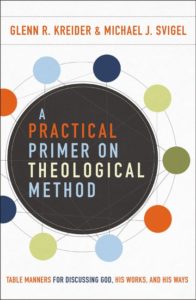
I don’t remember anything quite like the COVID-19 pandemic, not in my lifetime. The personal, social, economic, and political effects have been staggering. “Unprecedented” has been used over and over again. It’s natural for people to think this is an epoch-altering event in human history. So, as a professor of theology with an expertise in eschatology (the doctrine of “last things” or “end times”), I’m not surprised that I’ve gotten a lot of questions about how (or whether) the Coronavirus may be related to Bible prophecy.
Is the Coronavirus a fulfillment of biblical prophecy? Is it a sign that Christ is returning in our generation? A stage-setting step toward a global takeover by the Antichrist? Some insidious mechanism for foisting the mark of the beast upon unwitting hands and foreheads?
My unhesitant answer?
No, it’s not. (At least not according to my theology of the end times.)
Now, I know that answer won’t sell any books or get me any speaking invitations. And the numerous peddlers of this-is-that-ism already resent me for dousing their end-times fires with and abrupt “No.” Others will accuse me of being too hasty and dismissive, because maybe—just maybe—this is it! (Never mind the historical fact that the world has faced much, much worse pandemics than this one too many times to mention.)
My reasons for not linking end-times prophecy to the COVID-19 pandemic are fourfold.
1) We can’t know the times or seasons. In 1 Thessalonians 5:1-2, Paul says, “Now concerning the times and seasons, brothers, you have no need to have anything written to you. For you yourselves are fully aware that the day of the Lord will come like a thief in the night.” By the first century, the phrase “day of the Lord” (yōm Yhwh; hēmera Kyriou) had become a technical phrase referring to any period of time characterized by God’s mediated visitation in judgment in this world (Isaiah 13:6, 9; Ezek. 13:5; Joel 1:15; 2:1, 11; 3:4; 4:14; Amos 5:18, 20; Obad. 15; Zeph. 1:7, 14; Mal. 3:23). Though there have been many “days of the Lord” throughout history, the New Testament looks forward to a final period of judgment on this earth—the ultimate “Day of the Lord,” characterized by the kinds of events described by Jesus in the Olivet Discourse (Matt. 24; Mark 13) and pictured in the symbolism of the book of Revelation—war, famine, disease, deception, etc. Some people call this period the “Tribulation.”
In 1 Thessalonians 5, Paul says the destruction of the Day of the Lord will come “suddenly” (5:3), “like a thief in the night” (5:2). Like the time of the coming of Christ, we will not know “the times and the seasons” (5:1; cf. Acts 1:7 related to the coming of Christ as king). Unlike the more specific “day and hour,” the phrase “times and seasons” (chronoi kai kairoi) refers to a more general, indefinite period of time. Let me illustrate. Imagine if a certain satellite in orbit around the earth were bound to fall out of the sky and crash. But imagine scientists said, “Not only do we not know the day or hour, but we don’t even know the period of time or season.” In other words, we have no idea when the satellite will fall, we just know it will. Similarly, in 1 Thessalonians Paul communicates that we can be neither precise nor general in our estimation of when the Tribulation (“Day of the Lord”) will begin.
Therefore, we can point to no current events—like COVID-19—as markers that we’re in the end times or even in the general time or season of end-times events.
2) The Day of the Lord comes when people don’t expect it. In the same passage, Paul says the destruction of the Day of the Lord will come when people feel comfortable and secure. When they are saying, “Peace and security!” (1 Thes. 5:3), the destruction of the end-times Day of the Lord will come suddenly. The cry “peace and security” doesn’t mean they’re in the midst of horror and turmoil and they’re longing for peace and security. That explanation wouldn’t make sense because the inescapable destruction comes upon them “suddenly” and “like a thief in the night” (5:2-3). In fact, Jesus portrayed the ease people will be feeling prior to the coming of judgment this way: “But concerning that day and hour no one knows….For as in those days before the flood they were eating and drinking, marrying and giving in marriage, until the day when Noah entered the ark, and they were unaware until the flood came and swept them all away” (Matt. 24:36-39).
Both Paul and Jesus portray the sudden coming of the period of end-times judgments as preceded by a sense of calm, peace, and security, when people are carrying out their normal, everyday affairs like marriage and work (24:40-41). The coming of the Son of Man mentioned in this passage refers to his coming as the one who metes out judgment upon the earth, and that coming in judgment, known as the Tribulation or “Day of the Lord” will arrive like a thief in the night “at an hour you do not expect” (Matt. 24:42-44).
The global COVID-19 pandemic, which has stolen people’s sense of peace and security and literally delayed normal, everyday events like marriages and work, doesn’t line up with the Bible’s own portrayal of the kinds of conditions immediately preceding the actual Day of the Lord.
3) Nothing must precede the imminent Day of the Lord. Like many in the early church (Didache, Justin Martyr, Irenaeus, Hippolytus, Tertullian), I’m a futurist with regard to the coming seven-year Tribulation period, during which a literal Antichrist will wreak havoc on this world. This same period of time is the means by which God exercises judgment—the final Day of the Lord—partly prophesied in the Olivet Discourse (Matthew 24 [though I believe Jesus partly referred to events in the first century]), and more directly prophesied in the book of Revelation. I know this isn’t everybody’s view of the end times, but it’s mine, and it has strong early historical precedence.
The fact that the coming of Christ in judgment and the commencement of the Day of the Lord (Tribulation) can occur at any time—and that there are no warnings prior to its start—means that coming period is imminent. There is no count-down. There are no signs that must occur prior to the Day of the Lord. No intermediate prophecy needs to be fulfilled. No global government established. No technology invented. No specific politician in power. In fact, a consistent futurist reading of Revelation would regard all the symbolic visions described in that book of Revelation as finding their fulfillment during (not before) the future seven-year Tribulation. This would correspond with Jesus’s often-misinterpreted statement that wars, earthquakes, death, pestilence, false religions, and persecution would appear in the world, but “these are but the beginning of birth pains” and “see that you are not alarmed, for this must take place, but the end is not yet” (Matt. 24:4-8). Such events have been occurring throughout the world, to varying degrees, since the ascension of Christ and establishment of the church. Though it would be accurate to say these foreshadow (or provide “types” for) the kinds of intensified judgments of the actual Day of the Lord period, none of them are, in fact, the judgments themselves.
Of course, other views of the end times will render different results. The position known as “historicism,” which views the book of Revelation progressively fulfilled throughout history, would theoretically be open to any current events matching biblical prophecy. But a consistent futurist, like me, confines the fulfillment of these prophecies to the future. (And if one holds to a pre-tribulation rapture, the beginning of the Tribulation will be marked by that event, not preceded by any other.)
Therefore, because I believe the Day of the Lord is a definite future period of time marked by certain very distinct conditions, before which there are no prophecies to be fulfilled, COVID-19 is not an event of the Tribulation period.
4) No stage-setting events must precede the Day of the Lord. I’ve heard people say, “Well, this pandemic may not be the actual fulfillment of prophecy, but I think it’s setting the stage for it.” Then they may project some extremely speculative scenario in which a one-world government forms out of the COVID-19 crisis, some antichrist figure takes control, and the end-times prophecies come to pass. When I try to point out considerations 1–3 above, the response is something along the lines of “Well, you can’t be sure it isn’t preparing the way for the end times, so it’s better to be prepared.”
I do believe that someday in the future (maybe near, maybe far), the events of the end times will take place. Therefore, at some point, events in our world will immediately precede (and, I suppose, set the stage for) the Day of the Lord in some way. And, nobody can know for sure whether today’s events fall into that unique category. This fact, however, would be utterly unknowable and completely irrelevant. Theologically speaking, everything that has occurred in history from Christ’s ascension forward can be viewed as in some way setting the stage for the future Tribulation. Events of history are connected in a complex web of cause-and-effect, all under the providence and sovereignty of God. The prophet Daniel said that God “changes times and seasons; he deposes kings and raises up others” (Dan. 2:21).
But in light of points 1–3, there would be no way of knowing whether this or that current event is directly related to any stage-setting of end-times events within our own generation. So, it’s best not even to suggest this. Instead, we should apply Jesus’s words: “Therefore you also must be ready, for the Son of Man is coming at an hour you do not expect” (Matt. 24:44). And “It is not for you to know times or seasons that the Father has fixed by his own authority. But you will receive power when the Holy Spirit has come upon you, and you will be my witnesses in Jerusalem and in all Judea and Samaria, and to the end of the earth” (Acts 1:7-8).
In my thirty-plus years of being a believer, I’ve seen outright date-setters, sign-seekers, and this-is-that proclaimers come and go. Those of us who remember Y2K (Google it), recall well-meaning Christians write books plotting out how that global crisis was going to lead to the rise of Antichrist and the end times. They did the same with 9/11. And with every other significant world crisis that’s come along. We’ve been through this all before. In fact, for 2000 years the church has had to deal with such end-times speculations based on even more deadly and tragic crises than COVID-19.
But our job as Bible-believing Christians is not to look for signs, speculate about scenarios, or set dates. Our job is to be ready with lives of holiness and to preach the gospel to all peoples.







